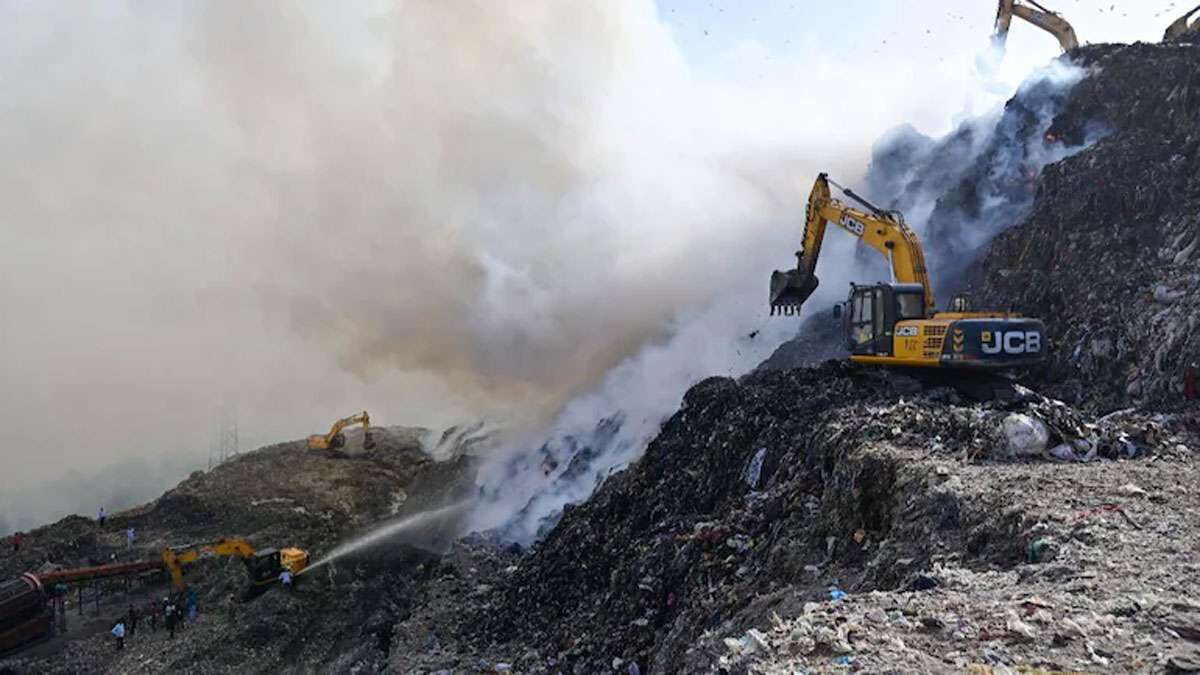Waste to wealth
Best practices reveal that proper waste management can solve the twin problems of rising pollution and resource crunch; write Pawan Sain & Akanksha Saini

The circular economy-based development approach is one of the key strategies for achieving the 2030 agenda for Sustainable Development Goals (SDGs). A development strategy that promotes the best use of resources, leading to optimum utilisation, is the need of the hour. Our wetlands are covered in mountains of trash, there are oceans of trash floating in our rivers and canals, clouds of smoke have been formed due to plastic burning, and the groundwater has turned reddish and yellow from leachate contamination. Waste management has indeed become an urgent issue.
Several reports suggest that untreated solid and liquid waste exposes people to several infectious and respiratory ailments, raising the expense of healthcare services while also decreasing productivity, which will directly affect the nation's economic growth. Additionally, the harmful effects of the greenhouse and toxic gases caused by the anaerobic decomposition of waste include soil, water, and air pollution, global warming, climate change, and the resulting calamities. Furthermore, reduced soil fertility will result in low agricultural productivity, which will negatively affect economic growth.
India faces huge health, environmental and economic challenges due to waste generation and inadequate garbage collection, transportation, treatment and disposal. Things are changing at a faster pace and India can learn from international experiences in dealing with the chaos. India's sewage treatment facilities (STPs) are only equipped to handle little more than a third of the country's daily sewage production as per Central Pollution Control Board (CPCB). Singapore turned water vulnerability into an opportunity by launching NEWater in 2002. The city-state had always relied on Malaysia for importing potable drinking water. But with the establishment of NEWater, things changed drastically. After the treatment at various stages, the resultant water exceeds WHO drinking water standards.
The Ghazipur landfill in Delhi has grown 65 metres high, just a little short of Qutub Minar, and covers an area of 70 acres. The combination of highly flammable items and common rubbish at the site is a major problem since it increases the risk of fire. Moreover, the creation of leachate contributes to groundwater pollution. But there are enough examples globally where such types of landfills are generating electricity and gas for the city. Seoul in South Korea is the best example to replicate.
Only 1 per cent of the waste in Sweden ends up in landfills. Source segregation is the main strategy behind this. The majority of households separate the waste into various categories. Sweden has justified 'garbage is gold' by generating energy from its waste and has significantly reduced its carbon emission.
Indore in MP and Surguja in Chhattisgarh have been ranked as the cleanest big and small cities, respectively, in the country as per Swachh Survekshan Survey. Source segregation, a decentralised waste processing facility and a community-based approach were all used by the community to keep the city clean and orderly. They engaged in a variety of IEC activities using digital, print, and social media to alter the behaviour of various population segments.
The construction of off-grid sewage treatment plants (STPs) has been very successful in small township areas. The best examples are Tamil Nadu Police Housing Colony and President's Estate in New Delhi. Not only has the sewage treatment facility resolved the issue of sewage disposal, but it has also given a pond of treated water for fishing, vegetable farming, Gardening and groundwater recharge.
Various other Indian cities were identified for the best practices of waste management. Alappuzha (Kerala) and Panaji (Goa) for reducing the operating cost through source segregation. Mysuru (Karnataka) is applying scientific techniques to turn biodegradable garbage into compost. Paradeep (Odisha) has adopted a decentralised and community-driven model with micro-composing centres and material recovery facilities.
If the waste is not managed, it eventually ends up on land, either scattered or in landfills or polluting the water bodies. Waste may be an environmental issue as well as a resource. Poor waste management results in significant material loss and can have negative effects on the environment and human health. This means that we need to make an effort to produce as little non-hazardous waste as we can. For trash that still occurs, material recycling should be prioritised over energy recycling, where it is environmentally justified.
The focus should be on segregation at source, and fresh plastic and other waste production should be made more expensive than recycling by taxation policy. Innovative ideas and new businesses should be supported financially to set up waste-to-energy units. All local governments should have landfills in proportion to the amount of waste they produce after recycling. A new tax can be introduced to tax the producers in proportion to waste generated. This will help in the generation of funds to adequately finance SWM & LWM infrastructure. The producer and the private sector should be given primary responsibility for treating and selling treated water for agricultural and industrial usage. Governance for waste management must consider the complexities and relationships inside and outside of the government. Waste is a valuable resource that shouldn't be ignored or thrown away.
Pawan Sain is Joint Secretary, EAC-PM; and Akanksha Saini is Young Professional, EAC-PM. Views expressed are personal



